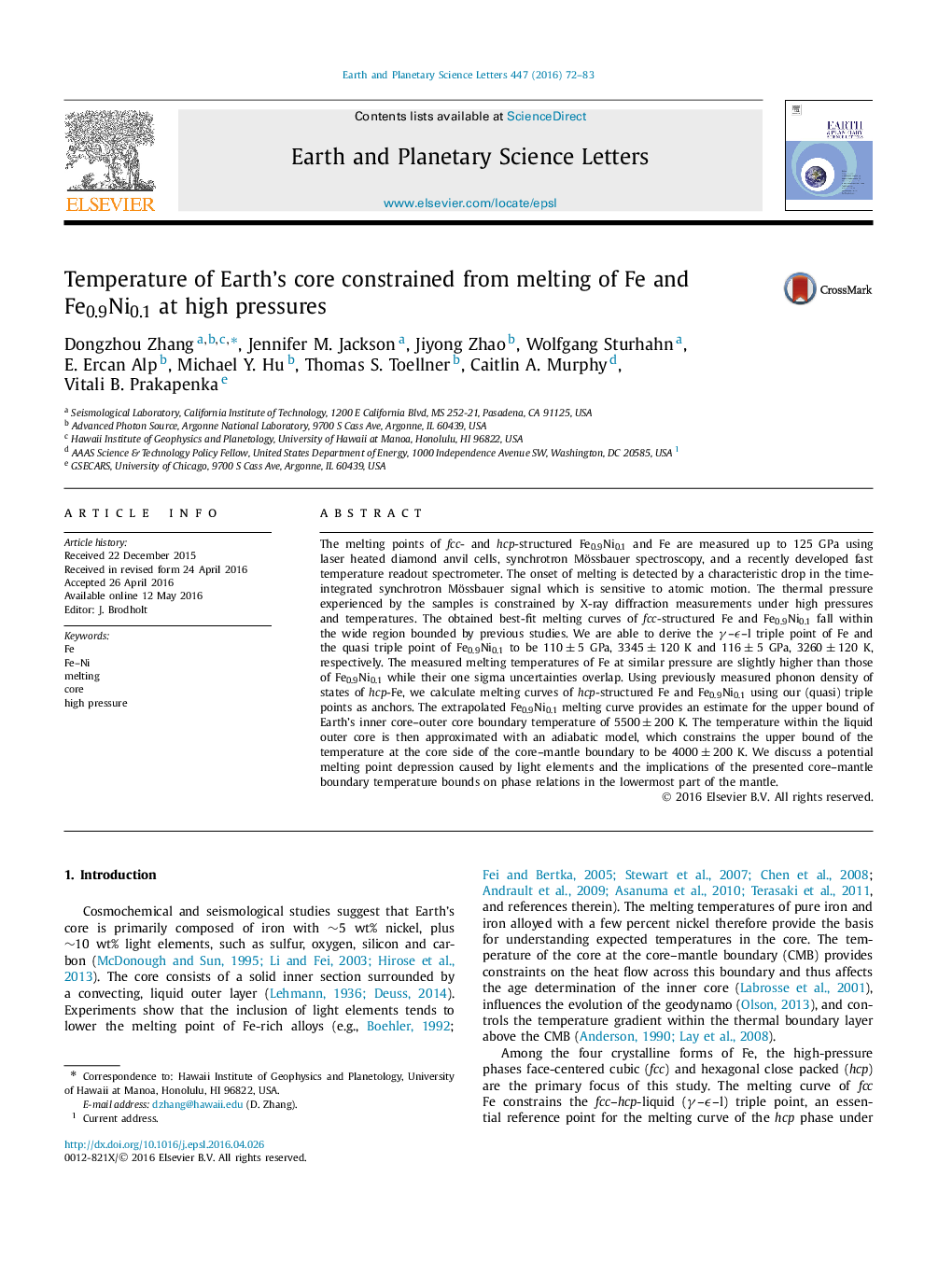| کد مقاله | کد نشریه | سال انتشار | مقاله انگلیسی | نسخه تمام متن |
|---|---|---|---|---|
| 6427464 | 1634709 | 2016 | 12 صفحه PDF | دانلود رایگان |

- Melting points of fcc- and hcp-Fe and Fe0.9Ni0.1 are measured up to 125 GPa.
- Melting curves of hcp-Fe and Fe0.9Ni0.1 are constrained to 330 GPa.
- The upper bound of Earth's inner core boundary temperature is estimated as 5500±200K.
- The temperature within the outer core is approximated with an adiabatic model.
- The temperature and the phase relations in the lowermost mantle are discussed.
The melting points of fcc- and hcp-structured Fe0.9Ni0.1 and Fe are measured up to 125 GPa using laser heated diamond anvil cells, synchrotron Mössbauer spectroscopy, and a recently developed fast temperature readout spectrometer. The onset of melting is detected by a characteristic drop in the time-integrated synchrotron Mössbauer signal which is sensitive to atomic motion. The thermal pressure experienced by the samples is constrained by X-ray diffraction measurements under high pressures and temperatures. The obtained best-fit melting curves of fcc-structured Fe and Fe0.9Ni0.1 fall within the wide region bounded by previous studies. We are able to derive the γ-ϵ-l triple point of Fe and the quasi triple point of Fe0.9Ni0.1 to be 110±5GPa, 3345±120K and 116±5GPa, 3260±120K, respectively. The measured melting temperatures of Fe at similar pressure are slightly higher than those of Fe0.9Ni0.1 while their one sigma uncertainties overlap. Using previously measured phonon density of states of hcp-Fe, we calculate melting curves of hcp-structured Fe and Fe0.9Ni0.1 using our (quasi) triple points as anchors. The extrapolated Fe0.9Ni0.1 melting curve provides an estimate for the upper bound of Earth's inner core-outer core boundary temperature of 5500±200K. The temperature within the liquid outer core is then approximated with an adiabatic model, which constrains the upper bound of the temperature at the core side of the core-mantle boundary to be 4000±200K. We discuss a potential melting point depression caused by light elements and the implications of the presented core-mantle boundary temperature bounds on phase relations in the lowermost part of the mantle.
Journal: Earth and Planetary Science Letters - Volume 447, 1 August 2016, Pages 72-83